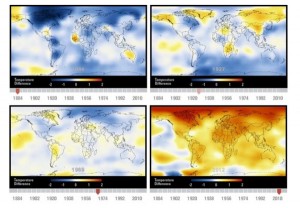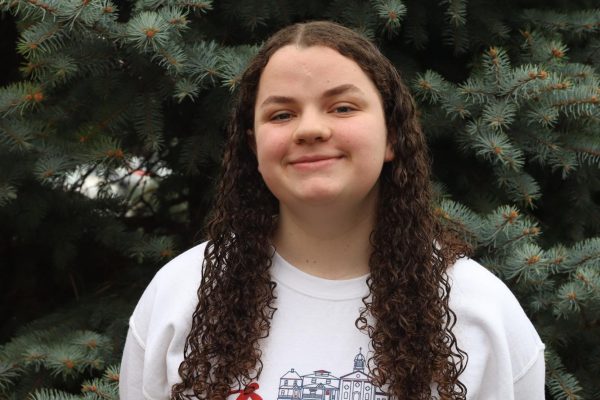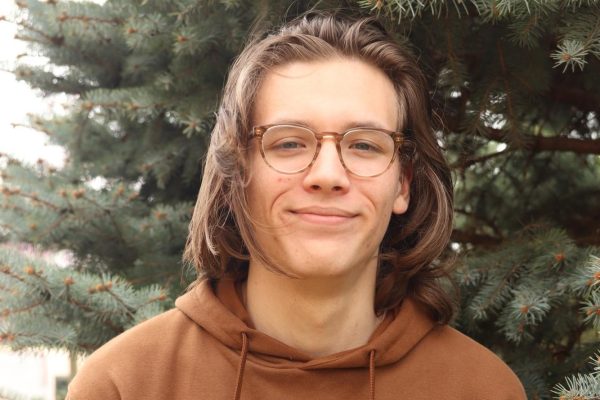Snow versus science: setting the deniers straight
In light of this winter’s recent “polar vortex,” skeptics of climate change have been using the frigid temperatures as ammunition for their battle against science. However, Florida-based meteoroligst Ryan Maue explained in an interview with the L.A. times that such a vortexes are “a normal feature that’s part of the polar climate.” He defined the mythical vortex as nothing more than a “huge mass of arctic air [that] has slipped away from the North Pole, settled over the U.S. and made everything really, really cold.”Weather experts are still warning about the need to take action against climate change.
Bill McKibben of environmental organization 350.org told the New York Times “if the U.S. isn’t taking [climate change] seriously, there is no reason for anyone else to.” And unfortunately, many of our current leaders don’t seem to be taking this seriously at all. Below are some of, in my opinion, the most unsettling quotes about climate change. The first step toward change is making people aware of the issues.
“Manmade global warming is poppycock.” -columnist and activist Herman Cain
I’m not entirely sure of the technical definition of “poppycock,” but I think it would conflict with the 97% of scientists who agree climate change is quite real, according to NASA. Unfortunately, a recent survey of Americans has shown that 23% are on Cain’s side, saying they believe climate change is not happening, a number up seven percentage points since the last survey from April of 2013. As for the debate over whether or not humans have played a role in such nonexistent climate change, the Intergovernmental Panel on Climate Change (IPCC) released a report in September 2013 stating it is “extremely likely” that emissions of greenhouse gases, particularly carbon dioxide, are causing Earth’s average temperatures to rise. Alarmingly, thirty-seven percent of Americans deny the findings, instead blaming natural fluctuations. They do not see climate change as a pressing issue, as Stephen Colbert quipped, “I don’t want to be one of those grandpas who spoils the grandkids with a habitable planet.”
“It isn’t pollution that’s harming the environment. It’s the impurities in our air and water that are doing it.” – former Vice President Dan Quayle
Of course it’s not pollution. It’s all those cars and factories filling our air and water with their nasty chemicals, toxins and other pollutants. Pollutants, not pollution, see the difference? I’ll cut Mr. Quayle some slack, though. After all, President Reagan once cautioned that trees cause air pollution.
“According to the University of Illinois’ Arctic Climate Research Center, global sea ice levels now equal those of 1979.”- Washington Post columnist George F. Will
Sounds factual enough, right? Wrong. The “University of Illinois’ Arctic Climate Research Center” does not exist. Actual scientists at the university rebuked Will for citing false evidence.
“Carbon dioxide is portrayed as harmful. But there isn’t even one study that can be produced that shows that carbon dioxide is a harmful gas.” -Rep. Michelle Bachmann
Disputes over the negative effects of carbon dioxide are at the center of the climate change debate. However, the after decades of peer-reviewed research, scientists have concluded that the large amounts of carbon dioxide produced by humans since the industrial revolution are adversely affecting our planet’s climate. A recent study by Stanford University has even connected the changes in Earth’s climate to health problems and even long-term increases in mortality rates among humans.
“Al Gore’s not going to be rounding up Jews and exterminating them. It is the same tactic, however. The goal is different. The goal is globalization … And you must silence all dissenting voices. That’s what Hitler did. That’s what Al Gore, the U.N., and everybody on the global warming bandwagon [are doing].” -talk show host Glenn Beck
Systematic, prejudiced genocide based on racial fanaticism can hardly be compared to bipartisan scientific research. Nazi propaganda was based on fear, exploiting the instability of 1930’s Germany. Advocates for climate change awareness are sharing their message in the hopes of prompting change to help us, not harm us.
“We don’t know what those other cycles were caused by in the past. Could be dinosaur flatulence, you know, or who knows? -Rep. Dana Rohrabacher
Well, scientists are fairly certain they know. Dinosaurs have been extinct for millions of years, yet alarming global climate trends have continued, and even increased. Today, there is no one around to blame but ourselves, and “flatulence” seems hardly a probable cause. Any natural causes seem unlikely, as during the last 35 years of global warming, scientists published findings in the journal Atmospheric Chemistry and Physics that tracked a slight cooling trend for the sun as Earth’s average temperatures have continued to rise.
“It’s cold. Al Gore told me this wouldn’t happen.”– Rep. Ted Cruz
The real inconvenient truth is not limited to Earth’s rising temperatures. Climate change can include major changes in wind patterns, annual precipitation, seasonal temperatures variations and extremes at both ends of the thermometer. Shifting climates can affect water supplies and natural disasters such as forest fires, according to Gavin Schmidt, a climate scientists at NASA’s Goddard Institute for Space Studies. Schmidt also explains that a burst of cold weather does not change the accumulated data of global averages. He cited Minneapolis, MN as an example:
“ In the 1970s, the city had an average of 14.7 nights with temperature below -10°F (-23°C) each year, but before the recent cold snap it had only a few days that cold in the past few years. In the decade between 2002 and 2012, the average number of days below -10°F was only 3.8. And temperatures in North America reached record highs in 2012, making it the hottest year since recordkeeping began in 1895.” “People have forgotten what cold weather is like,” he says. “This was common 20 years ago,” Schmidt said.

“Looks to me like we’re looking at global cooling. Forget this global warming. That’s just my opinion.” – Fox News reporter Stuart Varney
I think I’ve exhausted all my points. I’ll let Jon Stewart take this one. I’ll leave you all with the map below to provide a few examples of the global effects of climate change. Click on each marker to learn more about what has happened, is happening and will happen around the world.
Your donation will support the student journalists of Kirkwood High School. Your contribution will allow us to purchase equipment and cover our annual website hosting costs.

Grade: 12
Hobbies: reading, shoping, running, spending time with friends and family, music
Extra Curriculars: student council, Call, Believing is...













